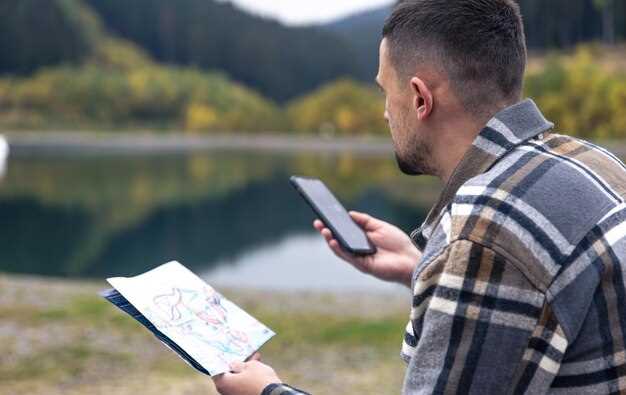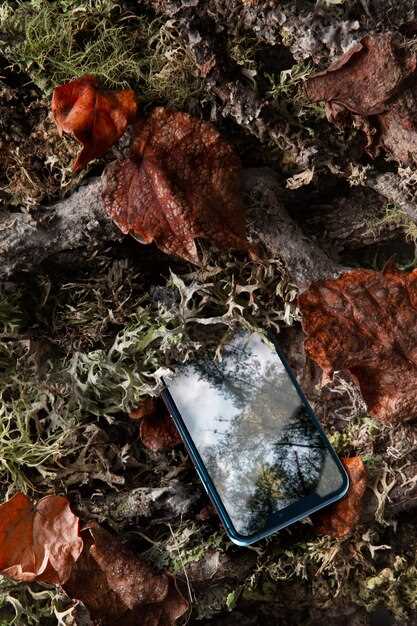
In the realm of outdoor exploration, having the right navigation tools can make all the difference between a successful adventure and a disorienting experience. As technology evolves, outdoor enthusiasts are faced with the choice between traditional adventure GPS units and the increasingly popular smartphone mounts. Both options offer unique advantages and disadvantages, making it essential to understand their features and functionalities to determine the best fit for individual needs.
Adventure GPS units, purpose-built for rugged environments, often come with advanced features such as topographic mapping, long battery life, and resistance to water and extreme temperatures. These dedicated devices provide reliable performance in remote areas where cell service may be absent, making them a trusted companion for serious explorers. On the other hand, smartphone mounts present a more versatile solution by leveraging the multifunctional capabilities of smartphones and modern apps tailored for outdoor navigation.
Understanding the specific requirements of your adventures can guide your choice. Factors like battery sustainability, ease of use, and the availability of offline maps play a critical role in decision-making. Whether you are trekking through dense forests, scaling mountains, or navigating unfamiliar terrains, selecting between adventure GPS units and smartphone mounts is a fundamental step in ensuring a safe and enjoyable exploration experience.
Comparing Navigation Accuracy Between GPS Devices and Smartphone Mounts
Navigation accuracy is a critical factor for adventurers and explorers relying on technology for route planning and location tracking. Both dedicated GPS devices and smartphone mounts offer unique advantages in this domain, yet their performance can differ based on various circumstances.
Dedicated GPS devices generally provide superior accuracy compared to smartphone mounts. These devices use specialized chipsets and antennas designed for acquiring satellite signals effectively, often supported by advanced algorithms that enhance positioning precision. They typically perform better in environments with obstructed views, such as dense forests or mountainous terrain, where smartphones may struggle to maintain a strong signal.
Smartphone mounts, while convenient and multifunctional, can exhibit variability in accuracy. The GPS chips found in smartphones are generally less powerful than those in dedicated devices. Additionally, smartphones rely heavily on a combination of satellite signals, Wi-Fi positioning, and cell tower triangulation. In urban environments with tall buildings or other signal obstructions, the smartphone’s accuracy can diminish, leading to potential navigation errors.
Battery life is another crucial consideration affecting performance during navigation. Dedicated GPS units are designed for long-lasting use, often extending for many hours or even days on a single charge. In contrast, using a smartphone for navigation can quickly drain its battery, especially if other applications are running concurrently. This factor can lead to premature device failure during extended explorations, impacting overall navigation reliability.
Weather conditions also play a role in navigation accuracy. Dedicated GPS devices tend to perform consistently in challenging weather situations, such as heavy rain or snow. Conversely, smartphones may face issues due to moisture interference and reduced signal strength in adverse conditions, potentially leading to inaccurate location tracking.
In summary, while both GPS devices and smartphone mounts serve the purpose of navigation effectively, dedicated GPS units generally offer higher accuracy and reliability in diverse environments. Adventurers should consider their specific needs and the contexts in which they will be exploring before choosing between these two options.
How to Choose the Right Mount for Your Smartphone During Outdoor Activities

Choosing the right mount for your smartphone is crucial for ensuring safe and effective navigation during outdoor activities. The first step is to consider the type of activity you will be engaging in, such as hiking, biking, or kayaking, as this will influence the mounting style needed.
Next, assess the compatibility of the mount with your smartphone model. Various mounts are designed for specific devices, taking into account size, shape, and camera placement. Ensuring a secure fit is essential to prevent your phone from falling during intense movements.
Look for mounts that offer durability and weather resistance, especially if you frequently encounter harsh outdoor conditions. Materials such as high-quality plastics or aluminum alloys are preferable for longevity and strength. Waterproof or water-resistant features can also protect your device from unexpected rain or splashes.
Consider the mounting mechanism as well. Options include adhesive pads, clamps, or straps. Adhesive pads provide a strong, permanent bond but may limit repositioning, while clamps or straps offer flexibility for adjustments. Choose a method that aligns with how often you switch between locations or activities.
Stability is another critical factor; ensure the mount can securely hold your smartphone even during bumpy rides or rugged terrain. A stabilizing feature such as shock absorption can be beneficial when biking or off-roading.
Lastly, evaluate additional features, such as the degree of adjustability and ease of access. A mount that allows for various viewing angles and easy handling will enhance your navigation experience. Some mounts even enable wireless charging, which can be a great convenience during extended trips.
Durability and Weather Resistance: Which is Better for Harsh Environments?

When exploring rugged terrains or unpredictable weather conditions, the choice between an adventure GPS unit and a smartphone mount becomes critical. Adventure GPS units are specifically designed for outdoor use, often boasting military-grade durability and water resistance rated at IP67 or higher. These devices can withstand significant impact, exposure to dust, and immersion in water, making them reliable companions in severe environments.
On the other hand, smartphones, while increasingly equipped with advanced features, generally prioritize sleek design over durability. Most mainstream smartphones have some level of water resistance, commonly rated at IP68, but they are not immune to damage from drops or extreme temperatures. Even with protective cases, smartphones are still vulnerable when faced with the rigors of adventure activities, such as hiking, mountain biking, or camping.
Battery performance is another consideration. Adventure GPS units typically utilize long-lasting batteries optimized for continuous use in remote locations, whereas smartphones often struggle to maintain battery life under demanding conditions, particularly with high usage of GPS and location services.
Furthermore, the screens of dedicated adventure GPS devices are designed for visibility in bright sunlight and can resist scratches better than most smartphone displays. This is crucial for navigating effectively in outdoor settings where sunlight can interfere with readability.
In summary, for harsh environments where durability and weather resistance are paramount, adventure GPS units outperform smartphones. Their robust construction, superior water and dust protection, and extended battery life make them the preferred choice for serious explorers seeking reliability in extreme conditions.